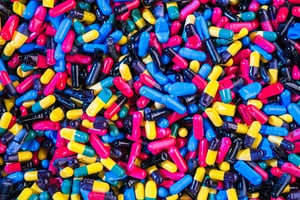Share this
another TDM success story: determination of a novel antiepileptic
by Neoteryx Microsampling on Jun 12, 2018 5:15:00 AM
In the realm of therapeutic drug monitoring, particularly for measuring antiepileptics, microsampling techniques continue to make good on their promise.
 Scientists from Unilabs York Bioanalytical Solutions in the United Kingdom and UCB Biopharma in Belgium recently developed, validated, and performed an exciting new approach for determination of a novel antiepileptic drug in dried human blood, based on breakthrough dried blood microsampling techniques – and they’ve shared their remarkable results.
Scientists from Unilabs York Bioanalytical Solutions in the United Kingdom and UCB Biopharma in Belgium recently developed, validated, and performed an exciting new approach for determination of a novel antiepileptic drug in dried human blood, based on breakthrough dried blood microsampling techniques – and they’ve shared their remarkable results.
In this study, an analyte solution was spiked into fresh wet blood, mixed and sampled onto multiple Mitra® microsampler tips. Overnight, the tips dried in a rack, and organic and aqueous extraction processes were put to the test. The organic extraction method showed more promise and was thus picked for further optimization.
The study succeeded in bridging between dried blood microsampling and wet plasma sampling. Regarding the hematocrit bias that has hampered the adoption older dried blood sampling methods, in the case of these Volumetric Absorptive Microsampling (VAMS™) based techniques, "precision and bias were within the validation acceptance criteria" at all HCT levels.
This follows quickly on the heels of a similar success story from Altasciences in Quebec. The success of these studies is a tribute both to the promise and efficacy of VAMS techniques and to the scientific diligence of the researchers making it work. Their diligence will pave the way for even easier success for others in the future.
Since 2016, there has been exponential growth in interest in the use of microsampling techniques, particularly within the context of clinical drug development. Microsampling techniques eliminate many technical and logistical concerns formerly associated with the use of dried blood. Their advantages over traditional venipuncture are clear; they allow for remote blood collection (anywhere, anytime, by nearly anyone, with minimal training), and can be part of a less stressful sampling experience, especially for children and the elderly.
It’s hardly surprising to see VAMS gain more widespread interest with therapeutic drug monitoring, validation, and adoption by the month. The bold and diligent scientists and clinicians who believe in microsampling suggest that this will only continue.
Share this
- Microsampling (206)
- Research, Remote Research (119)
- Venipuncture Alternative (105)
- Clinical Trials, Clinical Research (83)
- Mitra® Device (73)
- Therapeutic Drug Monitoring, TDM (51)
- Dried Blood Spot, DBS (39)
- Biomonitoring, Health, Wellness (30)
- Infectious Disease, Vaccines, COVID-19 (24)
- Blood Microsampling, Serology (23)
- Omics, Multi-Omics (21)
- Decentralized Clinical Trial (DCT) (20)
- Specimen Collection (18)
- Toxicology, Doping, Drug/Alcohol Monitoring, PEth (17)
- Skin Microsampling, Microbiopsy (14)
- hemaPEN® Device (13)
- Preclinical Research, Animal Studies (12)
- Pharmaceuticals, Drug Development (9)
- Harpera Device (7)
- Industry News, Microsampling News (5)
- Antibodies, MAbs (3)
- Company Press Release, Product Press Release (3)
- Environmental Toxins, Exposures (1)
- July 2025 (1)
- May 2025 (1)
- April 2025 (2)
- December 2024 (2)
- November 2024 (1)
- October 2024 (3)
- September 2024 (1)
- June 2024 (1)
- May 2024 (1)
- April 2024 (4)
- March 2024 (1)
- February 2024 (2)
- January 2024 (4)
- December 2023 (3)
- November 2023 (3)
- October 2023 (3)
- September 2023 (3)
- July 2023 (3)
- June 2023 (2)
- April 2023 (2)
- March 2023 (2)
- February 2023 (2)
- January 2023 (3)
- December 2022 (2)
- November 2022 (3)
- October 2022 (4)
- September 2022 (3)
- August 2022 (5)
- July 2022 (2)
- June 2022 (2)
- May 2022 (4)
- April 2022 (3)
- March 2022 (3)
- February 2022 (4)
- January 2022 (5)
- December 2021 (3)
- November 2021 (5)
- October 2021 (3)
- September 2021 (3)
- August 2021 (4)
- July 2021 (4)
- June 2021 (4)
- May 2021 (4)
- April 2021 (3)
- March 2021 (5)
- February 2021 (4)
- January 2021 (4)
- December 2020 (3)
- November 2020 (5)
- October 2020 (4)
- September 2020 (3)
- August 2020 (3)
- July 2020 (6)
- June 2020 (4)
- May 2020 (4)
- April 2020 (3)
- March 2020 (6)
- February 2020 (3)
- January 2020 (4)
- December 2019 (5)
- November 2019 (4)
- October 2019 (2)
- September 2019 (4)
- August 2019 (4)
- July 2019 (3)
- June 2019 (7)
- May 2019 (6)
- April 2019 (5)
- March 2019 (6)
- February 2019 (5)
- January 2019 (8)
- December 2018 (3)
- November 2018 (4)
- October 2018 (7)
- September 2018 (6)
- August 2018 (5)
- July 2018 (8)
- June 2018 (6)
- May 2018 (5)
- April 2018 (6)
- March 2018 (4)
- February 2018 (6)
- January 2018 (4)
- December 2017 (2)
- November 2017 (3)
- October 2017 (2)
- September 2017 (4)
- August 2017 (2)
- July 2017 (4)
- June 2017 (5)
- May 2017 (6)
- April 2017 (6)
- March 2017 (5)
- February 2017 (4)
- January 2017 (1)
- July 2016 (3)
- May 2016 (1)
- April 2016 (2)



No Comments Yet
Let us know what you think